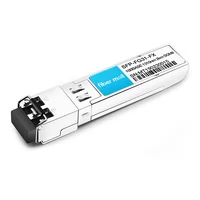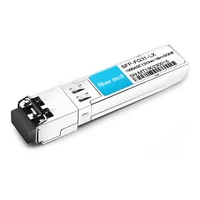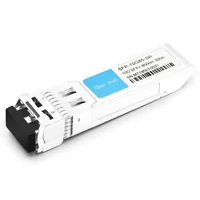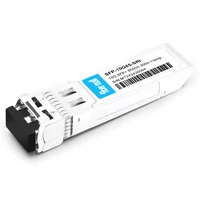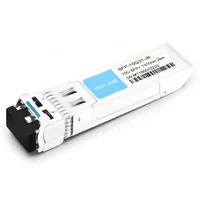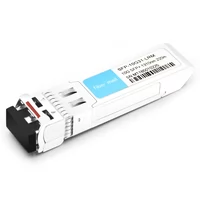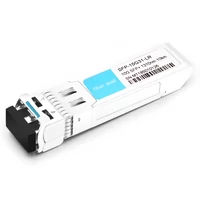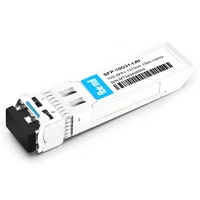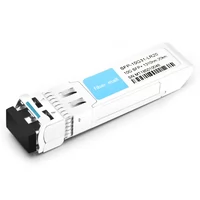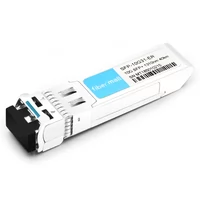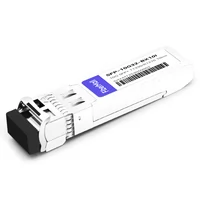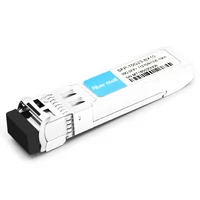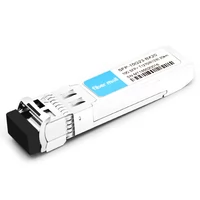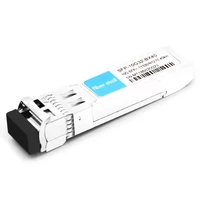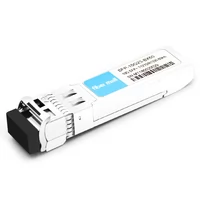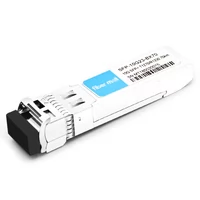In today’s digital world, which is fast-paced, high-speed, and trustworthy, network connections are a must-have. Sophisticated networking hardware is what makes it possible for data to be transmitted seamlessly, whether for enterprise-level applications or mere internet browsing. Ethernet ports and SGMII SFP transceivers are some of the vital components that enhance efficient network performance. This detailed manual looks at optical transceivers in-depth, particularly focusing on SGMII (Serial Gigabit Media Independent Interface) and SFP (Small Form-factor Pluggable) modules and their relevance in modern networking infrastructures. In addition, readers will also understand how they function technically, their specifications, what to consider before buying them, and where they can be used, among other things. The goal of this article is to enlighten both network professionals and enthusiasts so that they can make the right choices while optimizing their networks and investing in hardware wisely.
Table of Contents
ToggleWhat is an SFP Transceiver, and How Does it Work?
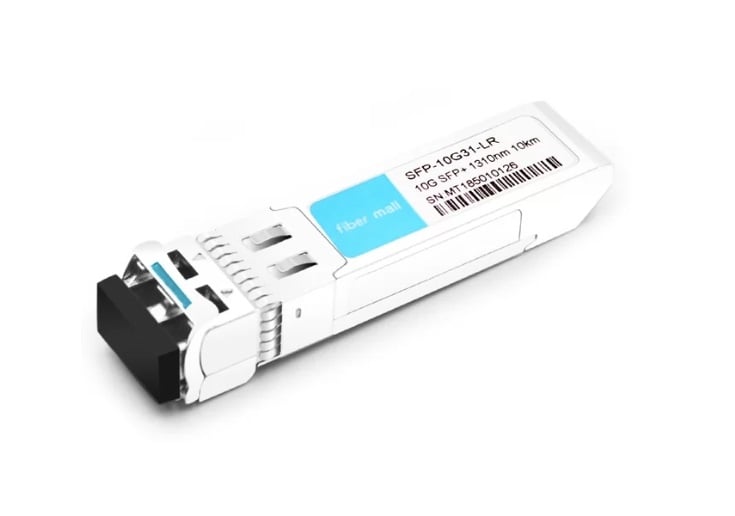
Understanding SFP Transceivers
Compact, hot-swappable Small Form-factor Pluggable transceivers (SFP) are designed for the purpose of fast data transmission across networks. These devices are developed to fit in network switches’ SFP ports or other networking devices like routers, among others; thus, they support numerous communication protocols like Ethernet, Fibre Channel, and SONET. Copper or optical fiber cables can be used to transmit or receive data by an SFP module, depending on how it has been designed. An SFP transceiver is used primarily for converting the electrical signals from network equipment into optic signals, which can be transmitted over long distances via fiber optic cables and then convert received optical signals back into electric ones that will be processed by the network equipment. Scalable and flexible network architectures benefit immensely from the versatility and modularity of SFP transceivers.
The Role of the Transceiver Module in Networking
Efficient and flexible data transmission across various types of network infrastructure is made possible by the use of transceiver modules, which play a pivotal role in modern networking. They are designed this way so that they can interchangeably support both single-mode and multi-mode fiber as well as copper media, adapting to different networking requirements without necessarily requiring a change of all equipment used. The main functions, technical specifications, and application cases are discussed herein:
- Data Rate Support: SFP transceivers can handle an array of data rates starting from 100 Mbps (Fast Ethernet) to 28 Gbps (25G Ethernet).It is the data rate that defines the bandwidth capacity and overall performance of the network.
- Transmission Distance: Depending on design, SFP transceivers have varying distances over which they transmit data. Single-mode SFPs can reach up to 100 km while multi mode ones are usually limited to about 550 meters. Based on this capability, they can be used for different network topologies including Local Area Networks (LANs) up to Wide Area Networks (WANs).
- Wavelength: The operating wavelength of an SFP transceiver, commonly 850 nm, 1310 nm or 1550 nm, enables users know its application type together with the distance it covers. For example, 850 nm is typically used by multimode short-range applications while longer-range single-mode applications employ either 1310 nm or 1550 nm.
- Form Factors and Compatibility: Their small size along with hot-swappable nature makes SFP transceivers easily adaptable. These devices fit into ordinary SFP slots found in a variety of networking equipment allowing easy upgrades or maintenance processes.
- Power Consumption: In terms of power consumption, SFP Transceivers are designed to be energy efficient consuming between approximately 0.8W –1.5W each. Lower power consumption helps reduce operational costs and promotes sustainable energy practices within data centers.
These technical parameters ensure that today’s SFP transceivers are flexible, scalable, and efficient enough to cater for diverse networking environments. To achieve robust and high-performance connectivity in enterprise networks, data centers or telecommunications, transceiver modules remain indispensable.
Common Applications of SGMII SFP Modules
The reason why SGMII SFP modules are widely used in different types of networking is because they can be tweaked to adapt almost any requirement. Here are the most important ones:
- Enterprise Networking: SGMII SFP modules are essential components in enterprise networks as they enable a high-speed connection between switches, routers and servers which results into efficient data transfer and strong network performance.
- Data Centers: In this case, these models allow for smooth interconnectivity within data centers, thus allowing for seamless data exchange between storage systems, compute nodes and network switches. They are ideal for data-intensive activities since they can handle high bandwidth at lower power consumption levels.
- Telecommunications: As we have seen earlier on, these modules also play key roles in telecommunication by providing stable and scalable transmission of information in both short and long distances. Such connections prove useful especially when it comes to Metro and access applications requiring reliable high speed connectivity.
- Industrial Networking: In industries, SGMII SFP modules make it possible for automation and control systems to achieve real-time communication of data with guaranteed reliability under harsh conditions.
From these applications, one can understand the importance of using the right type of connecting equipment like SGMII-SFP transceivers. As a result, they enable an efficient, flexible, and high-performing LAN across various industries.
How to Choose the Right SGMII SFP for Your Needs
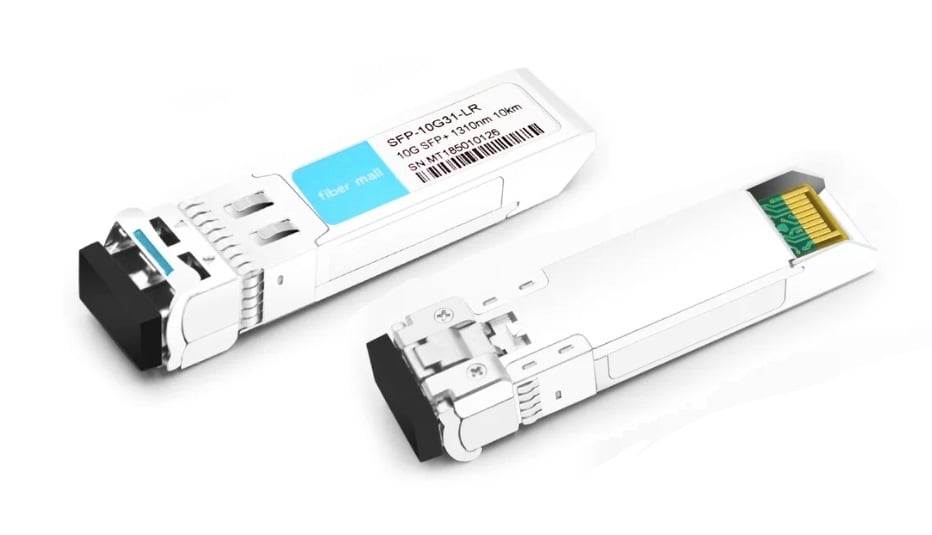
Factors to Consider When Selecting an SFP Transceiver
The following are the things to consider when choosing an SFP transceiver:
- Compatibility: Ensure that your existing network equipment, such as servers, switches, and routers, is compatible with the SFP transceiver.
- Data Rate: Select a transceiver capable of supporting the data rate necessary for your specific application like 1Gbps, 10Gbps or more.
- Transmission Distance: Determining the distance that the transceiver needs to send data across. They have different models ranging from short-range (SR), long-range (LR), and extended range (ER).
- Connector Type: The connector type of the SFP module should be checked, for instance LC, SC and RJ-45 so that it matches with networking devices ports.
- Wavelength: The wavelength should be equal to the optical fiber type in your network, whether it’s single-mode (1310nm, 1550nm) or multi-mode (850nm).
- Environmental Conditions: In industrial settings, opt for transceivers which are designed withstanding harsher conditions including a wider temperature range and increased durability.
- Budget: Consider both initial purchase cost and long-term operating costs, such as power consumption and frequency of replacement, when balancing your needs against budgets.
By considering these factors you will be able to choose an SFP Transceiver that will fit in well into your organizations’ network requirements as well as its operational goals.
Compatibility with Ethernet Ports and Networks
To evaluate the compatibility of SFP transceivers with Ethernet ports and networks, you must address several key points:
Supported Ethernet Standards:
- For instance, confirm that your SFP transceiver is supporting a specific Ethernet standard like 1000BASE-T for Gigabit Ethernet or 10GBASE-SR designed for 10Gigabit Ethernet over multimode fiber.
Port Specifications:
- Also, ascertain the type of port available on your network equipment (e.g., SFP, SFP+, QSFP) and match it with the appropriate transceiver module. For instance, most people use SFP, while others opt to use SFP+, which is capable of supporting high speeds of up to 10 Gigabits per second.
Compatibility with Network Devices:
- Thirdly, confirm that this interface supports all proprietary brands and models in use by your organization’s network devices since some vendors may have requirements that are not industry-standard.
Backward and Forward Compatibility:
- It should also be established whether the transceiver can operate at slower rates than ones compatible with higher rates; thus enabling greater flexibility when upgrading networks. For example, certain types of modules can work at both speeds: 1 Gbps and 10 Gbps.
Technical Parameters
- Data Rate: Adjustable support for speeds like 1Gbps, 10Gbps, 40Gbpsor100Gbps.
- Connector Type: LC , SC, RJ-45.
- Supported Standards: Examples here include: “1000BASE-SX,” 1000BASE-LX,” 10GBASE-SR,” and“10GBASE-LR.”
- Wavelengths: Multimode –850nm; single-mode –1310 or 1550nm.
- Transmission Distance: This varies widely between types of transceivers as well as what kind fiber optic cable you’re using; but usually ranges from one hundred meters to ten kilometers or further miles apart.
- Power Budget : Make sure that the power budget meets the loss characteristics of the optical link, which is typically specified in dB.
By considering these points and discussing the technical parameters indicated, you can optimize the performance and reliability of your SFP transceivers on Ethernet ports and networks.
Choosing Between 1310nm and 10km SFP Modules
Your network environment’s specific needs and characteristics must be thought about when considering whether to choose 10km or 1310nm SFP modules. Single-mode fiber applications widely use the wavelength of 1310nm, ensuring good transmission over short distances that hardly exceed 10 kilometers. Designed specifically for networks that cover up to ten thousand kilometers and beyond, the devices at a speed of ten gigabits per second are perfect for long-distance transmissions.
- Distance: The main factor is required transmission distance. If your network has range of up to10 km either option can work, but if you need precise distance and performance check if module supports required range.
- Wavelength & Mode: Pair single-mode fibers with 1310 nm SFPs to achieve loss-less signal power over a distance of 10 km. For instance, for some tasks such as higher wavelength stability and lower dispersion across large distances, it is better to use 1310nm modules.
- Compatibility and Performance: Make sure that the chosen SFP module is consistent with your existing infrastructure. It means that even during the upgrading or maintenance of current systems, optimal functioning and smooth integration will continue.
Therefore, network reliability and efficiency will be ensured after these aspects have been considered in making an informed decision.
What are the Key Features of SGMII SFPs?
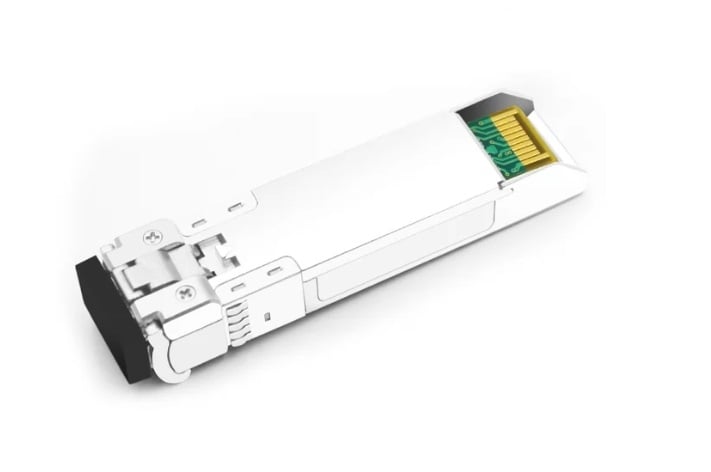
An Overview of the 1310nm 2km SFP Module
The SFP module type 2km, BIDI is designed for this purpose: short to medium-distance data transmission over single-mode fiber (SMF). This module has the following main features:
- Range: The device is specifically designed for effective data transfer of up to two kilometers hence it can be utilized in campus networks and intra-city connections.
- Wavelength: This operates at a wavelength of 1310nm which is typical of single mode applications thus making it very efficient with minimal signal loss and dispersion.
- Rate of Data Flow: A maximum rate of 1.25 Gbps data flow allows for various high-speed data-dependent applications to be handled.
- Compatibility: This device generally works with many different types of networking equipment; therefore, integration is seamless and they can fit into any network infrastructure that already exists.
- Robustness: It has been built to last long and not fail easily, meaning that it will always perform well without breaking down frequently.
A proper way can be made by which the 1310nm 2km SFP module could be integrated into the right network environments for resilient and effective data transmission if all these features were understood by network professionals.
The Benefits of Built-in PHY Devices Supporting SGMII Interface
Implementing SGMII-built-In-PHY devices can provide several benefits that are vital for improving network performance and dependability:
- Simplified Design: Integrating PHYs directly into networking equipment reduces the overall design complexity. Reduced number of components makes the device architecture simpler and improves production flow.
- Improved Signal Integrity: Having built-in PHY devices in place leads to better signal integrity as it minimizes external connectors or interconnects. This prevents loss or interference due to less points in which potential signal loss might occur, thus maintaining high data transmission quality.
- Power Efficiency: Integrated PHY solutions normally consume less power than separate PHY implementations. This advantage is particularly useful in dense networking environments where performance should be considered with respect to power consumption and heat generation.
- Enhanced compatibility: Devices incorporating SGMII supporting Built-in PHY are usually more compatible with a broad range of networking equipment. Consequently, it integrates easily into various network configurations, lowering compatibility issues.
- Cost-Effective: Including PHY devices within the network equipment can reduce both production costs and operational expenses. Manufacturers and end-users would therefore benefit from reduced component count and increased efficiency.
- Space Saving: Internal PHY devices require less physical space than external ones. It is important for enterprises’ data centers and networks where optimization of space usage is crucial.
Technical Parameters
- Data Rate – The built-in PHY devices that support SGMII typically have a data rate of up to 1.25 Gbps.
- Transmission Distance – While the interface will be SGMII, the transmission distance capability will depend on the associated optical modules like 1310nm 2km SFP module.
- Wavelength – Pairing with 1310nm SFP modules ensures compatibility with standard single-mode applications.
- Power Consumption – Integrated PHYs are designed with minimum power use in mind to contribute towards the overall energy-efficient operation of the networking device.
By using built-in PHY products that support the SGMII interface, network experts can deliver more successful, dependable, and cost-effective network solutions.
Why LC Connectors are Important for SFP Transceivers
There are several reasons as to why LC connectors are crucial for SFP transceivers. Among them is that they have a small form factor, and this allows for denser installations in network environments, hence reducing the chances of losing any data sent across the fiber optics cables. In addition to it, this compact design is vital in optimizing space within data centers and other networking facilities. Their low insertion loss makes LC connectors perfect for ensuring better transmission quality and reliability of optical signals, thus leading to improved efficiency and more robust network performance. Finally, using a latch-style mechanism that is easy to use prevents disconnection on accident while guaranteeing secure and precise connection, which minimizes maintenance efforts and enhances network uptime. These characteristics make LC connectors suitable for high-speed networking applications today.
How to Install and Maintain SFP Transceivers
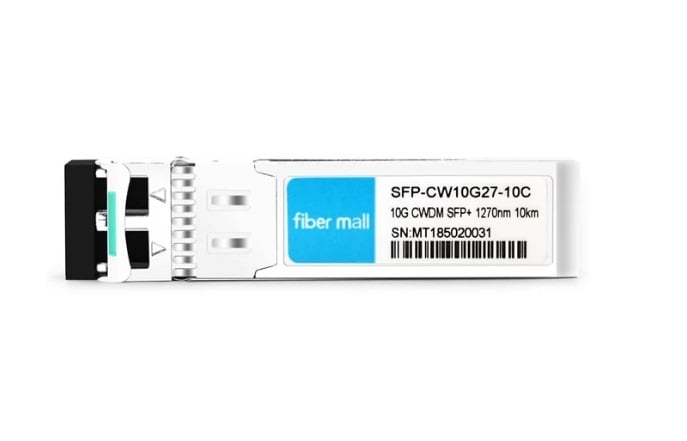
Step-by-Step Guide to SFP Installation
Ready the SFP Transceiver
- Verify Compatibility: Check if your network switch or router supports an SFP transceiver.
- Find out possible Damages: See any visible damage in the module before fixing it into a chassis.
Inserting the SFP Transceiver
- Unplug Dust Cap: Carefully remove the dust cap over the device.
- Align and Insert: Align your transceiver to the SFP port of your network device and insert it securely by pushing until it locks in place safely.
Connecting the Fiber Optic Cable
- Clean Connectors: Use LC connectors for fiber optic cleaning kits, including those used on transceiver ports.
- Insert Cable: Place the cleaned LC connector into the LC port on the transceiver, ensuring it is seated properly and secure enough.
Verifying Connection
- LED Indicators Check: Now verify if you have fixed correctly and operating well by observing LED lights on your networking device, blinking or constantly lit light should be displayed in normal conditions.
- Testing Connectivity: To ensure that data passed through SFP transceivers can reach intended destinations successfully do network connectivity tests sometimes even using online service providers to ping other IP addresses, for example www.ping.eu has been commonly used to check whether some online computers are connected properly through this method of sending small packets.
Maintenance Procedures
- Standard Cleaning Procedure: Clean connectors periodically as well as keep them free from dirt so that they continue functioning as required.
- Check Deterioration Signs: Regularly Examine each module for signs of theirs degradation or physical damage which may call for change.Currently these instructions are followed thus enabling users install SFPPs effectively hence stable and efficient networks are achieved.
Maintaining Your Optical Transceivers for Longevity
Environmental Control
- Temperature Regulations: Make sure that the environment your SFPs are operating in is kept within the range of 0 to 70 degrees Celsius (commercial) or -40°C to 85°C (industrial).
- Humidity Management: Keep humidity levels between 5% and 85%, non-condensing to prevent damage due to moisture.
Cleaning Procedures
- Use Appropriate Tools: Always use fiber optic cleaning kits tailored for SFP connectors and ports. Such kits usually contain absorbing-free wipes, cleansers, and other specialized utilities for effective maintenance.
- Cleaning Frequency: Clean before every connection or reconnection as well as once a month can help prevent bacterial infections.
Handling Precautions
- Dust Caps: When not in use, replace dust caps on both transceivers and cables so that dust, dirt particles do not access them.
- Static Electricity Protection: Grounding yourself with an antistatic wrist strap will inhibit electrostatic discharge or ESD that may damage sensitive components.
Firmware and Software Updates
- Keep Software Updated: Regularly look out for firmware updates for your company’s network devices, transceivers included because updated firmware could provide feature enhancements and critical security patches.
- Compatibility Checks: Before connecting your transceiver to a host device, ensure its firmware is comatible with the device’s software connectedness and performance problems are prevented this way.
Physical Inspections
- Visual Checks: Keep examining whether there are any visible signs of wearing away, corrosions or damages on external cases of these transceivers including their associated connectors.
- Electrical Testing: Use an optical power meter to measure output power and confirm if the transceivers meet their specified performance criteria.
By following these guidelines closely you will be able to increase the lifespan of your optical transceiver by a greater extent thus enabling continuous reliable network performances all through out.
Common Issues and Troubleshooting Tips
Challenges in Connecting
- Symptom: There are no link lights or the connection is intermittent.
- Troubleshooting:
- Examine Cable Connections: Ensure that the cables are well connected and there are no physical damages.
- Confirm Compatibility: Ensure that transceivers and switches are compatible and properly configured.
- Inspect Transceiver and Port: Look out for obstructions or any damage on these.
Signal loss
- Symptom: A signal may diminish or completely disappear.
- Troubleshooting:
- Clean Connectors: Dust and dirt can cause high degradation of signals in connectors. Use cleaning kits to ensure all connections are free from contaminants.
- Check Fiber Bends: Too much bending or wrapping of fiber optic cables results into loss of signal. Maintain proper bend radius as specified by the manufacturer.
- Inspect Fiber Type: Make sure you use the correct optical fiber type (single-mode or multi-mode) for each transceiver module.
Firmware Issues
- Symptoms: Unexpected behavior, inconsistent performance, etc…
- Troubleshooting:
- Upgrade Firmware: To fix known issues, both device switch and transceiver need to be updated with latest firmware version from manufacturer’s website.
- Reboot Devices: Sometimes, a simple reboot of both the transceiver and network device can resolve unexplained issues.
- Restore defaults: At times it is possible to remove previous configurations if they conflict so reset them back to factory settings during reconfiguration process of this program or hardware which saves problem solving time in your computer department.
By following these troubleshooting steps for addressing common problems, you will be able to maintain optimum performance and reliability for your optical transceiver network.
What Do Customer Reviews Say About SGMII SFP Modules?
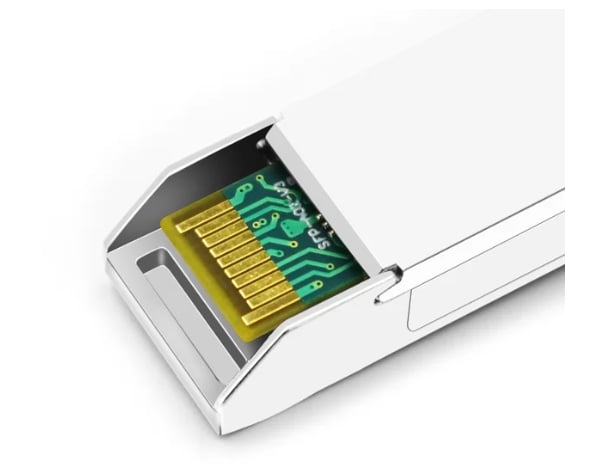
Customer Reviews of Popular SFP Transceivers
When you go through consumer testimonials on SFP transceivers, some critical patterns stand out. In most cases, the reason behind their popularity seems to be the machines’ dependable performances and robustness. Moreover, many comments emphasize that they are easy to install and can easily blend in with existing network setups. Customers also appreciate that there is always a steady transfer of data at all times without any signal loss even when the distances covered are long. However, there were some reviews that highlighted a few incidents of firmware compatibility problems that could miraculously be resolved by updating them generally. As a result, consumers tend to agree that these devices have incredible technical attributes coupled with trustworthiness and affordability.
Finding Reliable Reviews for SGMII-Compatible Devices
When it comes to trustworthy reviews for SGMII-compatible devices, feedback from verified customers and well-known sources should be put into consideration. First of all, one can turn to established technical forums like CNET, TechRadar, and Tom’s Hardware that provide detailed reviews and user opinions. Also, e-commerce platforms such as Amazon and Newegg provide valuable insights through customer reviews and ratings.
Key Technical Parameters:
- Data Rate: Ensure the maximum data rate supported by the SGMII SFP module is 1.25 Gbps, which is in accordance with the industry standard for SGMII interfaces.
- Compatibility: Make sure that the device is compatible with a wide range of switches and routers in order to ensure a smooth integration into your network.
- Wavelength: For short-range (SR), the common wavelength for SGMII SFP transceivers is 850nm while that for longer-range (LR) applications are 1310nm.
- Transmission Distance: The module’s transmission distance support must be checked; typically around up to 550meters for SR type or even up to 10 kilometers when dealing with LR kind.
- Power Consumption: Try to find modules having low power consumption of less than 1W so as they can operate in an energy efficient manner.
- Temperature Range: It is important that this transceiver works within a temperature range of commercial grade (0-70°C) or industrial grade (-40-85°C).
By considering these aspects closely as well as consulting credible product reviews made by trusted users, you will be able to opt for suitable SGMII-compatible items according to your network requirements.
Comparing Reviews of 1G SFP and Gigabit Ethernet Transceivers
CNET, TechRadar, and Tom’s Hardware—when compared to reviews of 1G SFP and Gigabit Ethernet transceivers, give a concise outline of their reliability, performance as well as cost-effectiveness.
According to CNET, both types of these transceivers are supposed to be reliable and cheap. They note that 1G SFP modules are ideal for high-speed network environments but their compatibility with numerous devices ensures that they can be integrated into the existing infrastructure without affecting it. It also points out that these transceivers are more energy efficient than traditional Gigabit Ethernet modules.
TechRadar reviews focus on technical specifications and user experiences, in particular praising 1G SFP transceivers, which have greater data transfer speeds and lower latency. They maintain that transmission distances, especially with SR and LR applications, often make these modules superior to conventional Gigabit Ethernet transceivers, which is why they can be used both for short-range and long-range networking solutions.
Tom’s Hardware offers an extensive contrast between build quality as well as durability by indicating that generally, 1G SFP transceivers tend to be stronger and some designed to handle differing environmental conditions. Their analysis implies that although the initial price is high, better long-term value derives from the enhanced performance characteristics alongside reduced maintenance associated with a move towards 1G SFP modules.
To sum up this article, if you care about reliability, efficiency or want your network future-proofed go for 1G SFP transceivers. However, where performance demands are moderate but cost becomes a primary consideration then Gigabit Ethernet might still be considered applicable.
Are There Compatible Alternatives to SGMII SFPs?
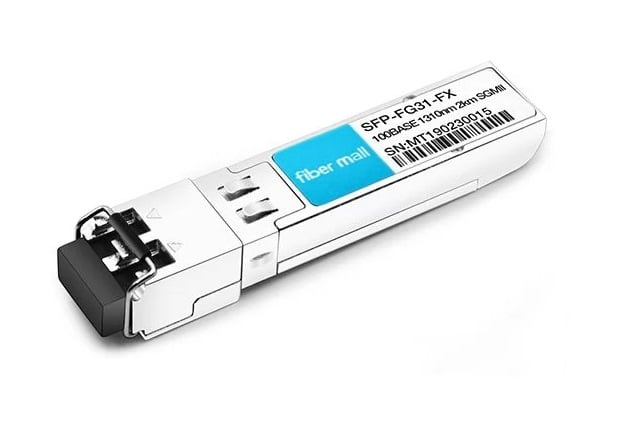
Exploring Copper Transceiver Options
When one needs to look for alternatives to the SGMII SFPs, copper transceiver options like Copper SFP modules (1000BASE-T) become a good solution. These modules have been specifically designed to transmit data over Cat5e, Cat6, or Cat7 copper cables at the same rates as their fiber counterparts but with an added advantage of utilizing already existent copper cabling infrastructure. Generally, Copper transceivers can flexibly work for short distances within data centers and across office networks that are usually not more than 100 meters long. In addition, these are also found to be cost-effective and easy to install hence making them efficient in environments where economical constraints and deployment speed are important. Copper transceivers continue to develop with changes in technology whereby they deliver Ethernet applications robustly and reliably.
Evaluating Compatible SFPs for Different Network Needs
There are various technical parameters that should be taken into account when considering compatible SFPs for different network needs to guarantee optimum performance and compatibility. Here below is a summary of evaluations based on important considerations:
Data Rate Requirements:
- Data rates must meet the standards established by data rates such as 1000BASE-T for Gigabit Ethernet or 10GBASE-T for higher speeds applications.
- Ensure the transceiver supports the necessary data rate (e.g., 1Gbps or 10Gbps).
Distance and Media Type:
- Fiber Optic SFPs: Good for long distances while their options include 1000BASE-LX (10 km), or 10GBASE-LR (10 km).
- Copper SFPs: These can be used within short distances of not more than 100 meters; they are usually used with Cat5e/Cat6/Cat7 cables.
Connector Compatibility:
- SFPs should have the right connector types such as LC for fiber modules or RJ-45 for copper modules.
Environmental Conditions:
- Temperature Range: Deployment has to consider standard commercial temperature range (0°C to 70°C) or industrial temperature range (-40°C to 85°C).
- Humidity and physical durability should also align with the operating environment.
Power Consumption:
- For energy efficiency, it is better to minimize power consumption, especially in large-scale deployment. Typical values of around 1W are available at most vendors targeting selling one gigabit per second optical interfaces; however, a few others continue using about two point five W power budgeted in ten gigabit per second pluggable optical devices, etc.
These variables will help one find the suitable SFP transceiver which best suits its network requirements ensuring compatibility, performance, reliability over a long period of time and cost effectiveness.
Comparing SGMII SFP with Other Optical Transceivers
SGMII (Serial Gigabit Media Independent Interface) SFPs, for instance, have the capability of being used in a variety of network equipment at the same time. As compared to other optical transceivers such as 1000Base-T, 1000Base-SX, and 1000Base-LX, several features distinguish SGMII SFPs.
Interface and Compatibility:
- SGMII SFPs: These modules directly connect to switch ports that support SGMII thereby making them highly flexible for various media types and network topologies.
- 1000BASE-T: Mainly used with CAT5e/CAT6 cables that are best suited for short-distance connections up to 100 meters due to their reliance on existing copper infrastructure.
- 1000BASE-SX/LX: While 1000BASE-SX is ideal for short range communication over fiber optic cables (up to 550 meters), 1000BASE-LX is a suitable choice when looking at long distances, like those between buildings (up to 10 kilometers).
Performance and Data Rate:
- SGMII SFPs: They can provide data rates of up to 1 Gbps which means that performance can be balanced across diverse operational environments.
- 1000BASE-T & Fiber Optic Transceivers: However, in relation to copper based ones, their distance capabilities are far much better than the latter with minimal signal degradation especially over longer spans.
Power Consumption
- SGMII SFPs: Often consume less power, which is very important for the development of energy-efficient networks.
- Other Optical Transceivers: In fact, fiber modules use more power than those made from copper do particularly when dealing with transmission over very long distances.
Environmental Adaptability:
- SGMII SFPs: These have been known for their consistent performance against different environmental conditions including wider temperature ranges hence are applicable in industries.
- Fiber and Copper SFPs: Nevertheless, fiber transceivers are highly suitable for high-speed and long-distance links but might require specific environmental conditions to maintain the best performance.
Ultimately, the decision between SGMII SFPs and other optical transceivers will depend on various factors, such as distance, power consumption and existing infrastructure in place. It is a trade-off between performance and cost-effectiveness.
Reference sources
Frequently Asked Questions (FAQs)
Q: What is an SGMII SFP transceiver?
A: SGMII SFP transceiver is a Small Form-Factor Pluggable (SFP) that has been designed for use in Ethernet ports allowing data to be transmitted through the optical fiber. It supports Serial Gigabit Media Independent Interface (SGMII) and suitable for fast ethernet and other network speeds.
Q: How does an SGMII SFP transceiver module work?
A: The operation of an SGMII SFP transceiver module usually involves converting electric signals from an ethernet device to light, which can be transmitted over the optical fiber. The modules typically have a built-in PHY device that supports the standards for the SGMII interface, and it is intended for applications with reliable data transferability.
Q: What are the benefits of using SGMII SFP optical transceivers?
A: There are several advantages associated with employing of the use of these devices like high-speed data transmission place, hot-plug connection support, compatibility with different Ether speeds such as 100base-fx and 10G, and they do not emit high-frequency waves in electrical fields since they employ glass fibers instead of copper cables.
Q: What types of Ethernet ports are compatible with SGMII SFP transceivers?
A: Various kinds of Ethernet ports such as fast ethernet, 100base-fx, or even higher-speed links like 10Gbps are supported by these devices as they are widely used in switches, routers, or any other network equipment equipped with an sfp port.
Q: Are there any specific considerations for using an (SGMII)SFP Transceiver in a Network?
A:The usage of this kindoftransceivers needs you to ensure that it is compatible with your networking gear and also verify if your application requires duplex LC connectors or other types. Additionally, take into account MSA standard conformity when choosing a transceiver for interworking, especially when MSA compliant transceivers are required.
Q: What’s the difference between SGMII SFP and other types of SFP transceivers?
A: In brief, Serial Gigabit Media Independent Interface (SGMII) is a standard that these transceivers support specifically for transmitting data at high speeds in gigabit ethernet setups. They differ from other media, such as copper SFP or 1000base-t copper SFP, which are designed for different applications.
Q: Can I use an SGMII SFP transceiver module with optical and copper connections?
A: With optical connections, an SGMII SFP transceiver module normally makes use of mode fiber to transmit data. Nevertheless, within RJ45 connectors, some copper versions also exist to handle ethernet signals, thus making them ideal for networks that require copper wiring.
Q: What does DDM mean in relation to SGMII SFP transceivers?
A: It is possible to monitor various parameters such as temperature, voltage, laser bias current and optical power using DDM, short for Digital Diagnostics Monitoring. This enables proactive network management and troubleshooting.
Q: How do I know if I should choose an SGMII SFP transceiver for my network?
A: To determine whether your network can accommodate anS GMII SFp tRanseivER you may rely on the rate of transmission required by you; Distance; Type of cabling; Optical or Copper You will need to verify whether your networking devices are compatible with SGMI standards and check out any environmental certifications desired such as RoHS compliance.
Q: What else is related to sgmii sfp transceivers?
A: Other related products include several different kinds of media converters like LX SGMIISFPs and XFPS for higher-speed applications other than those mentioned above; this category includes 1000base-tcopperSFPsand media converters that link dissimilar kinds of network cables.
Related Products:
-
 SFP-FG31-FX 100Base FX SGMII SFP 1310nm 2km LC MMF DDM Transceiver Module for Gigabit Ethernet Ports
$35.00
SFP-FG31-FX 100Base FX SGMII SFP 1310nm 2km LC MMF DDM Transceiver Module for Gigabit Ethernet Ports
$35.00
-
 SFP-FG31-LX 100Base LX SGMII SFP 1310nm 10km LC SMF DDM Transceiver Module for Gigabit Ethernet Ports
$100.00
SFP-FG31-LX 100Base LX SGMII SFP 1310nm 10km LC SMF DDM Transceiver Module for Gigabit Ethernet Ports
$100.00
-
 SFP-10G85-SR 10G SFP+ SR 850nm 300m LC MMF DDM Transceiver Module
$12.00
SFP-10G85-SR 10G SFP+ SR 850nm 300m LC MMF DDM Transceiver Module
$12.00
-
 SFP-10G85-SRI 10G SFP+ SR 850nm 300m LC MMF DDM Industrial High Temperature Transceiver Module
$13.00
SFP-10G85-SRI 10G SFP+ SR 850nm 300m LC MMF DDM Industrial High Temperature Transceiver Module
$13.00
-
 SFP-10G31-IR 10G SFP+ IR 1310nm 2km LC SMF DDM Transceiver Module
$15.00
SFP-10G31-IR 10G SFP+ IR 1310nm 2km LC SMF DDM Transceiver Module
$15.00
-
 Alcatel-Lucent SFP-10G-LRM Compatible 10G SFP+ LRM 1310nm 220m LC MMF DDM Transceiver Module
$15.00
Alcatel-Lucent SFP-10G-LRM Compatible 10G SFP+ LRM 1310nm 220m LC MMF DDM Transceiver Module
$15.00
-
 SFP-10G31-LR 10G SFP+ LR 1310nm 10km LC SMF DDM Transceiver Module
$18.00
SFP-10G31-LR 10G SFP+ LR 1310nm 10km LC SMF DDM Transceiver Module
$18.00
-
 SFP-10G31-LRI 10G SFP+ LR 1310nm 10km LC SMF DDM Industrial High Temperature Transceiver Module
$20.00
SFP-10G31-LRI 10G SFP+ LR 1310nm 10km LC SMF DDM Industrial High Temperature Transceiver Module
$20.00
-
 SFP-10G31-LR20 10G SFP+ LR 1310nm 20km LC SMF DDM Transceiver Module
$22.00
SFP-10G31-LR20 10G SFP+ LR 1310nm 20km LC SMF DDM Transceiver Module
$22.00
-
 SFP-10G31-ER 10G SFP+ ER 1310nm 40km LC SMF DDM Transceiver Module
$25.00
SFP-10G31-ER 10G SFP+ ER 1310nm 40km LC SMF DDM Transceiver Module
$25.00
-
 Cisco SFP-10G-BXD-I Compatible 10G BX SFP+ BIDI TX1330nm/RX1270nm 10km LC SMF DDM I-Temp Transceiver Module
$29.00
Cisco SFP-10G-BXD-I Compatible 10G BX SFP+ BIDI TX1330nm/RX1270nm 10km LC SMF DDM I-Temp Transceiver Module
$29.00
-
 SFP-10G23-BX10 10G BX SFP+ BIDI TX1270nm/RX1330nm 10km LC SMF DDM Transceiver Module
$24.00
SFP-10G23-BX10 10G BX SFP+ BIDI TX1270nm/RX1330nm 10km LC SMF DDM Transceiver Module
$24.00
-
 SFP-10G23-BX20 10G BX SFP+ BIDI TX1270nm/RX1330nm 20km LC SMF DDM Transceiver Module
$25.00
SFP-10G23-BX20 10G BX SFP+ BIDI TX1270nm/RX1330nm 20km LC SMF DDM Transceiver Module
$25.00
-
 SFP-10G32-BX40 10G BX SFP+ BIDI TX1330nm/RX1270nm 40km LC SMF DDM Transceiver Module
$35.00
SFP-10G32-BX40 10G BX SFP+ BIDI TX1330nm/RX1270nm 40km LC SMF DDM Transceiver Module
$35.00
-
 SFP-10G23-BX60 10G BX SFP+ BIDI TX1270nm/RX1330nm 60km LC SMF DDM Transceiver Module
$75.00
SFP-10G23-BX60 10G BX SFP+ BIDI TX1270nm/RX1330nm 60km LC SMF DDM Transceiver Module
$75.00
-
 SFP-10G23-BX70 10G BX SFP+ BIDI TX1270nm/RX1330nm 70km LC SMF DDM Transceiver Module
$100.00
SFP-10G23-BX70 10G BX SFP+ BIDI TX1270nm/RX1330nm 70km LC SMF DDM Transceiver Module
$100.00

